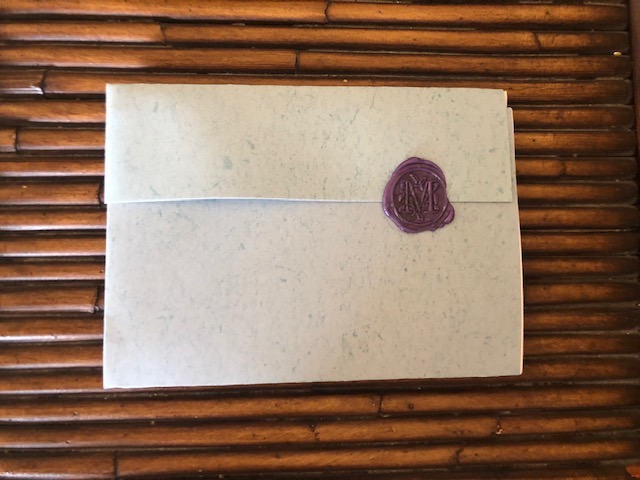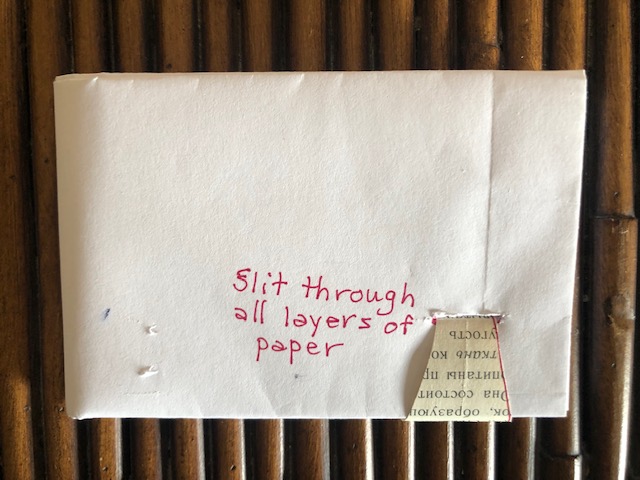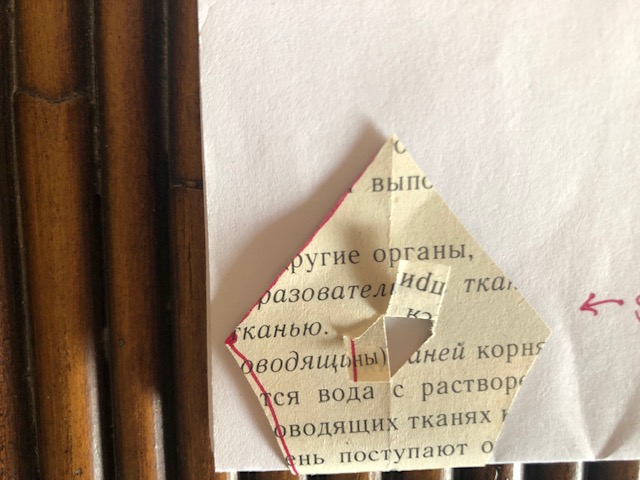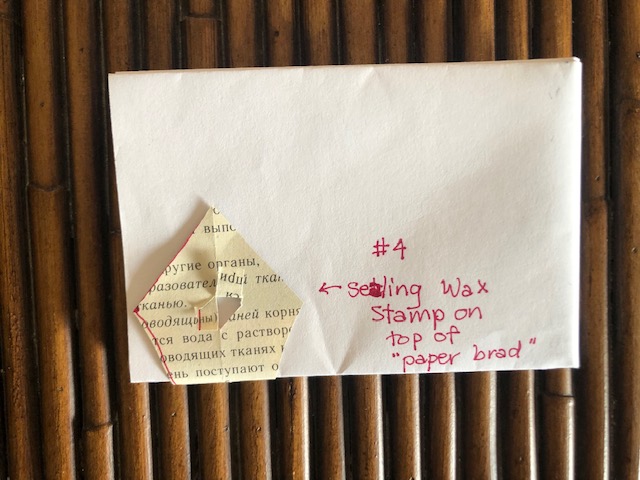Before there were postage stamps, before there were government-run post offices, before there were paper envelopes for written correspondence, there was letterlocking.
What is letterlocking? Letterlocking is a technique for securing handwritten epistolaries that was invented by letter writers during the 1300’s. That’s when flexible paper first became available in Europe; this thinner paper enabled correspondents to fold and secure their letters so their missives could function as their own envelopes or sending devices and their contents could be kept private.
Until the 1800’s, mail delivery in the western world was haphazard and expensive. Postage, which was usually paid by the recipient of the letter, was based on the number of pieces of paper, which would have included the paper used for the envelope, had envelopes existed. So for reasons of security and frugality, letter writers folded their letters into packets to both hide their contents from prying eyes and reduce mailing costs. These so-called security measures were certainly not foolproof but at a minimum, the recipients of these letters were able to determine whether the letters coming to them had been tampered with.
Letterlocking involved folding and securing one’s letters with small slits, string, tabs, and/or sealing wax. Over time, correspondents in all levels of society began to develop their own folding techniques. Mary Queen of Scots, Elizabeth I, John Keats, Machiavelli, Galileo, Walter Scott, and Marie Antoinette were among the more famous people who used letterlocking. Some of their unique folds and sealing techniques are recognizable, even today.
Letterlocked packets were of various sizes, some purposely small enough to be surreptitiously passed from one palm to another because in some cases their contents, if discovered, could have formed the basis for treason charge.
In 1926 the Sound and Vision Museum in The Hague acquired a trunk of letters that had once been in the possession of a postmaster named Brienne and his wife, a couple at the heart of Europe’s early communication networks. The trunk contained around 2600 letters sent to people in The Hague between 1689 and 1706, none of which was delivered to its intended recipient. (600 of these letters still remain unopened.) During the time these letters were sent, since their recipients were responsible for the postage, if the recipient was deceased, absent or rejected the letter, no fee could be collected and the letter remained undelivered. Some of the Brienne letters actually have the word “Refused” scribbled across them. Letters in this collection have been preserved and analyzed and are wonderful examples of letterlocking.
This winter I enrolled in a letterlocking class taught by Janet Faught, a calligrapher and artist who has studied the history of letter writing from its earliest days. Janet emailed instructions and snail mailed materials to the students in the online class and during class time she patiently demonstrated various letter locking techniques so we could try our hands at each. I now have a notebook filled with historical information, step-by-step diagrams of letterlocking instructions, and samples of each of the techniques she showed us, including those used by Jane Austen, John Donne, John Keats, and Elizabeth I. After the class ended, I sent some of these examples to friends and family. It was an artistic and fun way to communicate, although I needed to observe modern postal requirements to assure delivery.
Below are a couple of examples of letterlocking. The first photo shows the letterlocking technique used by the poet John Keats when he wrote to Fanny Brawne in 1820.

The next three photos show an example of the Anglican priest and poet John Donne’s letterlocking, sent around 1600. Note the paper brad securing the “paper lock”, which would then be further secured with sealing wax and the sender’s personal stamp.



If you’re interested in more information about letterlocking or enrolling in one of Janet’s online classes, contact me (Marilyn@Leelenauletterwriters.org or via snail mail) and I can put you in touch with her.
Please note: Some information for this post came from Wikipedia and Signed, Sealed and Undelivered at Brienne.org.
As always, thanks for reading!

